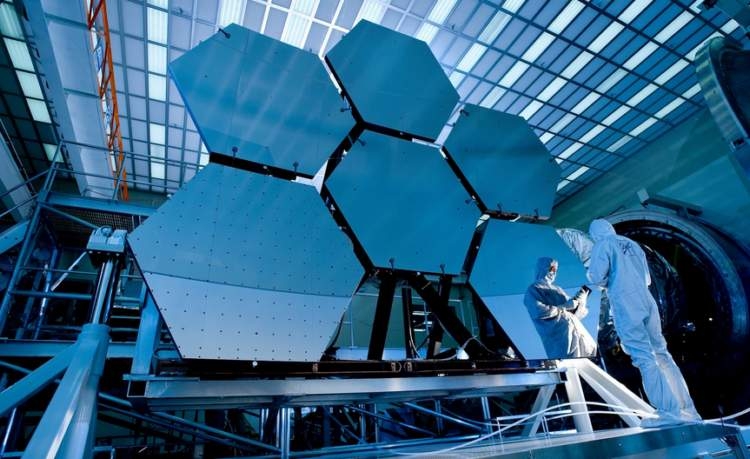Photography in Space: Challenges and Innovations

The Final Frontier: Snapshots in the Cosmos
As I sit here in the sweltering Las Vegas heat, sipping on a concoction of grapefruit juice and pure ether, I ponder the vast expanse of the cosmos and its seemingly infinite mysteries. The question burns in my brain, like a thousand suns exploding in unison: how the hell do we take photographs in space?
Venturing into the great unknown presents a cornucopia of challenges for the aspiring interstellar photographer. As we delve into this cosmic quagmire, it is important to note that no matter how far our technology advances, taking photographs in space will always be a bit like placing a bet on a cockroach race in the bowels of a Tijuana dive bar – unpredictable, bizarre, and often full of regret.
A Hostile Environment: Space, the Unforgiving
The wild frontier of space is not for the faint of heart. A myriad of challenges face our intrepid shutterbugs as they navigate the blackness, including:
- Zero Gravity: Floating around like a demented astronautical ballet dancer makes it difficult to maintain stability for those perfect shots of supernovae and interstellar gas clouds.
- Temperature Swings: In the realm of the heavens, temperature shifts are more extreme than the political leanings of a Nevada brothel owner. Cameras must be able to withstand fluctuations from -250°F to 250°F as they move in and out of direct sunlight.
- Radiation: The cosmic rays that pervade the cosmos are like bullets whizzing through an East St. Louis speakeasy, damaging cameras and corrupting precious images along the way.
Innovate or Die: The Spacefaring Camera's Evolution
Our desire to capture the celestial beauty beyond our pale blue dot has forced us to adapt our terrestrial contraptions to the harsh demands of the cosmos. Let us examine a few notable innovations in the field of spacefaring photography:
- Weightlessness-Defying Mounts: To combat the challenges of zero gravity, our ingenious space photographers have developed camera mounts that clamp onto handrails and other structures. These marvels of engineering hold the camera steady like the iron grip of a blackjack dealer on a slippery deck of cards.
- Thermal Management: To prevent cameras from becoming as frozen as the heart of a Las Vegas casino magnate, engineers have developed multi-layered insulation blankets to shield the delicate instruments from the frigid cold of space. Conversely, radiators and heat sinks are used to dissipate heat from cameras that find themselves basking in the unrelenting rays of our nearest star.
- Radiation Shielding: To protect cameras from the ravages of cosmic rays, shielding materials have been developed that act as a barrier to keep out these invisible, nefarious invaders. This is akin to a desperate gambler placing a bible on his chest to stop a hail of bullets from the mob enforcer he owes money to – sometimes you just have to believe in a higher power.
The Vanguard of Space Photography: Hubble, Curiosity, and Beyond
Throughout history, a handful of intrepid explorers have navigated treacherous landscapes and faced seemingly insurmountable odds to capture images that have changed our understanding of the universe. In the realm of space photography, the Hubble Space Telescope and the Mars Curiosity Rover stand as shining examples of this audacious spirit.
Hubble Space Telescope: Launched in 1990 and named after famed astronomer Edwin Hubble, the Hubble Space Telescope (HST) has captured images that make even the most jaded, drug-addled mind reel in awe. However, the HST's inception was not without its share of strife. Initial blurry images sent scientists into a frenzy, akin to a gambling addict realizing he's lost his life savings on a fixed fight. Nevertheless, our intrepid cosmic photographers persevered, eventually correcting the issue and allowing the HST to capture images that have expanded our understanding of the universe.
Mars Curiosity Rover:The Mars Curiosity Rover, another valiant explorer of the cosmic wilds, has been traversing the Martian landscape since 2012 like a robotic Ansel Adams. With its suite of cameras, including the Mars Hand Lens Imager (MAHLI) and Mast Camera (Mastcam), Curiosity has captured breathtaking panoramas of the Red Planet that make one long for a simpler time when we believed Mars was inhabited by canals and intelligent, war-mongering extraterrestrials.
Space Photography: A Glimpse Into the Uncharted Abyss
The quest to capture the cosmos in all its splendor is a perilous yet rewarding endeavor. As we continue to push the boundaries of space photography, we can only imagine what otherworldly vistas and cosmic phenomena await us beyond the veil of our earthly existence. So as we sit here on our pale blue dot, gazing into the heavens, let us raise a glass to the intrepid space photographers who have given us a glimpse into the uncharted abyss of the cosmos – for they have shown us that even the darkest corners of the universe can be illuminated by the flash of a camera.
|
|






